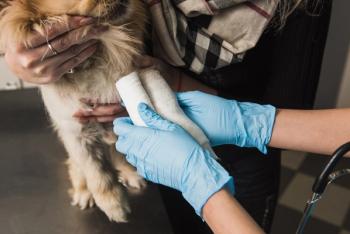“I really encourage my team members to follow those recommendations for their own pets and then work on written guidelines make sure they're accessible to everyone and for our newer team members or if we're changing protocols work on developing a written script,” Boatright said to attendees.
Including the team in your protocol creations can also help identity team members who are maybe more passionate or ‘better at’ getting compliance with clients. If you have a technician that is good at getting owners to agree with certain testing, have them share with the rest of the team. By sharing what works and what does not, it can help team members develop their own presentations of the protocols to help them get the same success as that other technician has had.
Boatright provided the follow list of items that teams should consider when creating a preventive care protocol:
- Type of vaccines (core vs non-core)
- Heartworm and tick testing
- Laboratory Testing (CBC, Chem, UA, T4)
A technician’s role
Technicians in the clinic can take on many roles, including promoting preventive care to clients. The expertise and training that technicians receive puts them in the position to be an irreplaceable asset in improve compliance by using education and improving efficiency through performing technical tasks, according to Boatright.
During visits, technicians can provide more detailed information to clients about preventive care recommendations, in response to any owner questions once they are checked in. They can also sit with the clients to review recommendations for future visits, review treatment plans, and present estimates. Then, once the any test results come in, they can call or email the client once it has been reviewed by a veterinarian. As a technician, they are qualified to deliver the results due to your background, making technicians a great resource to help educate clients and answer medical questions.
Technicians can also improve efficiency. Veterinary practices can have clients schedule technician appointments for booster vaccinations, wellness testing, and other preventive service when a veterinarian’s examination is not required. For a regular veterinary visit, these technicians can start the appointment by collecting and preparing samples to be tested as well as read in-house fecal samples.
“I want [technicians] to elaborate on the recommendations in the exam room. I want them to go over treatment plans and estimates of clients. And then a lot of times I'm reviewing the results, and once I'm getting them, I am delegating back to my technician to go over the results with the client,” said Boatright.
“So we are partners in communication. You guys are often doing that initial history collection. You're starting to identify some of the barriers or concerns that the client might be coming into the visit with, and we know that there is data that shows that client decision making is improved when both a credentialed veterinary technician and a veterinarian are involved in the dialog and so the more that we can partner together, the better our overall client experiences will be”
Takeway
Veterinarian technicians are a crucial part of every veterinary clinic, so utilizing them to the best of their capabilities will help your team improve in all aspects, including preventive medicine. Having a protocol in place with technicians assisting in educating patients can help their owners make the most informed decisions when it comes to their pets care, in result keeping more pets happy and healthy.
Reference
Boatright K. Leveraging Technicians to Maximize Preventive Care Compliance. Presented at: American Veterinary Medical Association Convention; Washington, DC: July 18-22, 2025.







